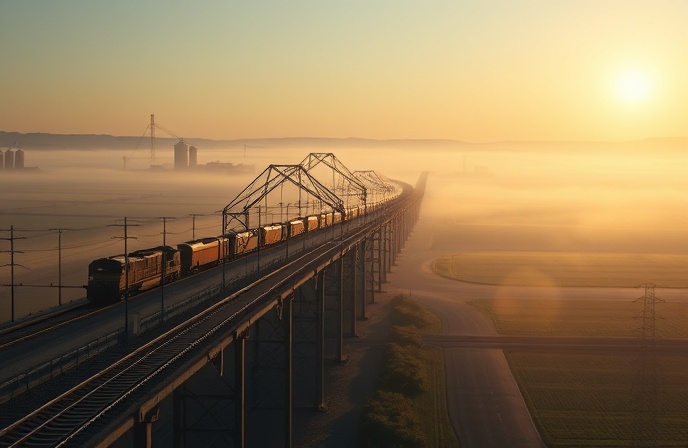High-Speed Rail: Federal Funding Dispute & Future of Railway Tech
California’s high-speed rail project faces federal funding dispute, jeopardizing its future. CHSRA challenges FRA report, citing progress.

California High-Speed Rail Project Faces Federal Funding Scrutiny
The California High-Speed Rail Authority (CHSRA) is locked in a dispute with the Federal Railroad Administration (FRA) over the potential termination of federal funding for the high-speed rail line currently under construction in the Central Valley. On June 12th, CHSRA CEO Ian Choudri sent a strongly worded letter to FRA Acting Administrator Drew Feeley, contesting the findings of a recent FRA report that could jeopardize the project’s financial future. This article will delve into the core of this disagreement, examining the FRA’s concerns, Choudri’s counterarguments, and the potential ramifications for the ambitious high-speed rail project. The key questions are: Who is involved? What is the core issue? When did this occur? Where is this taking place? Why is it happening? And how is it likely to unfold?
Disputing the FRA’s Findings
At the heart of the controversy lies the FRA’s investigation and subsequent report, which, according to Choudri, is “nothing more than rhetoric aimed at justifying a preordained conclusion.” The FRA’s findings, which have not been publicly released in their entirety, appear to raise concerns about the CHSRA’s progress and financial management. Choudri’s letter directly addresses these concerns, contesting each of the core findings. The FRA’s concerns likely pertain to adherence to project timelines, cost overruns, or the overall feasibility of the project’s current phase. The dispute centers on the first construction segment in the Central Valley, where the FRA’s concerns may be most pronounced.
Choudri Defends Project Progress
A significant portion of Choudri’s letter focuses on disputing claims of minimal progress. He emphatically stated, “I must also take this opportunity to dispute, in the strongest possible terms, the misleading claim that the authority has made ‘minimal progress to advance construction.'” Choudri highlights the tangible infrastructure advancements already completed in the Central Valley. He pointed to the construction of “many of the viaducts, overpasses, and underpasses on which the first 119 miles of high-speed rail track will run.” This response aims to counter the FRA’s assessment by showcasing the physical manifestation of the CHSRA’s efforts and progress in developing the necessary infrastructure for the high-speed rail line. These structures are fundamental to the successful deployment of the high-speed rail network.
Funding Plan and Project Viability at Risk
The potential termination of federal funding poses a serious threat to the CHSRA’s financial sustainability. This includes funding allocated through the American Recovery and Reinvestment Act (ARRA). Federal funds are crucial for the CHSRA to continue its construction activities in the Central Valley, and the project’s viability is directly linked to ongoing financial support. Without these funds, the construction of the high-speed rail line could stall, leading to delays, increased costs, and potentially the abandonment of certain segments. The FRA’s decisions will have far-reaching implications for the future of high-speed rail in California and serve as an important consideration for other ongoing rail projects across the country.
Conclusion
The clash between the California High-Speed Rail Authority and the Federal Railroad Administration underscores the complex challenges inherent in large-scale infrastructure projects, particularly those involving public funding. The dispute over federal funding is a critical test of the project’s future. The outcome of this standoff will have considerable consequences. The FRA’s assessment and subsequent actions will significantly affect the project’s trajectory. The CHSRA’s ability to successfully defend its position, demonstrate progress, and secure continued funding is paramount to realizing the state’s vision for high-speed rail. The implications of this dispute will extend beyond California, offering valuable lessons for other high-speed rail initiatives across the United States. This ongoing situation will be closely watched by the railway industry as it navigates project management and compliance.





